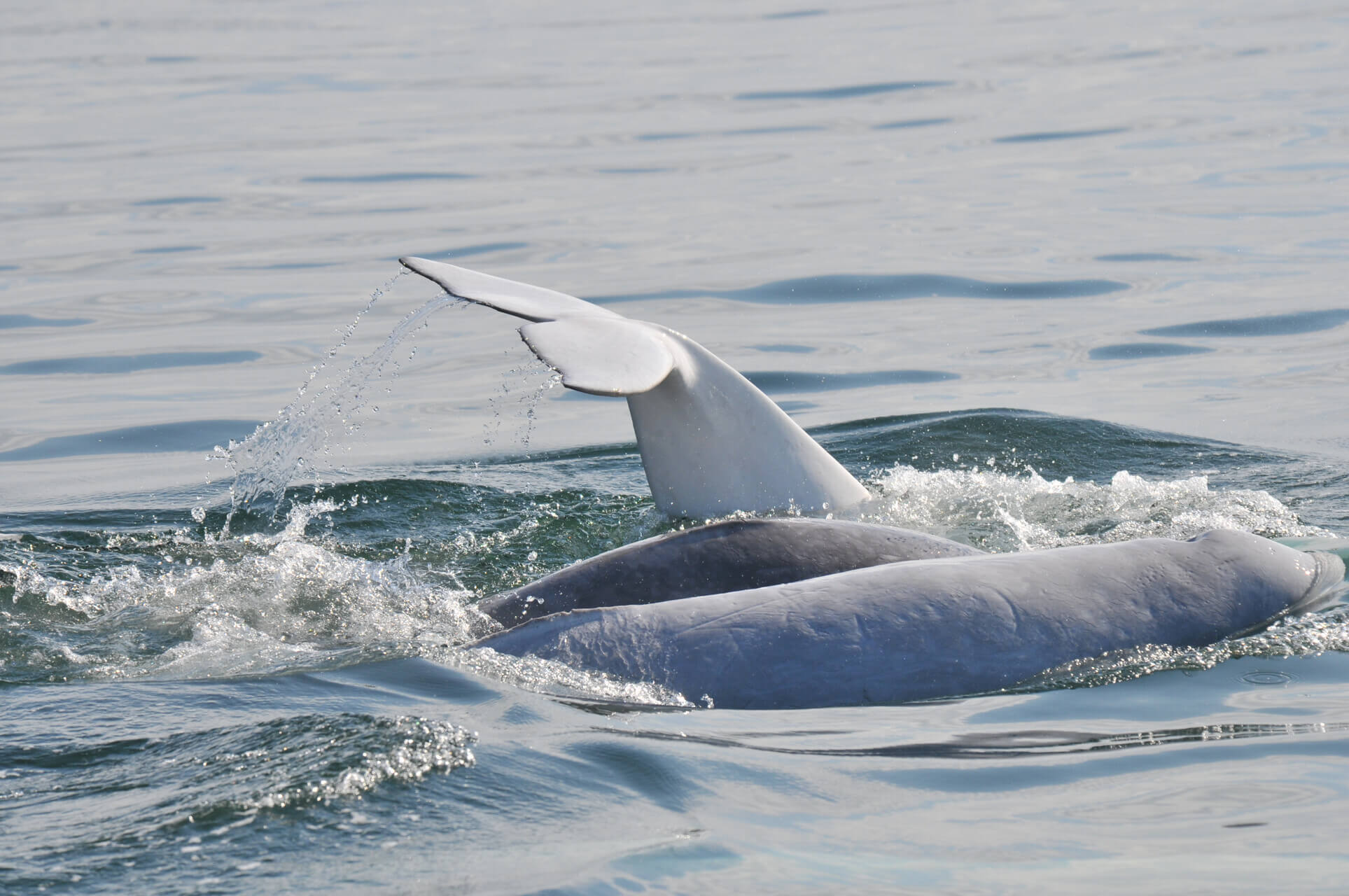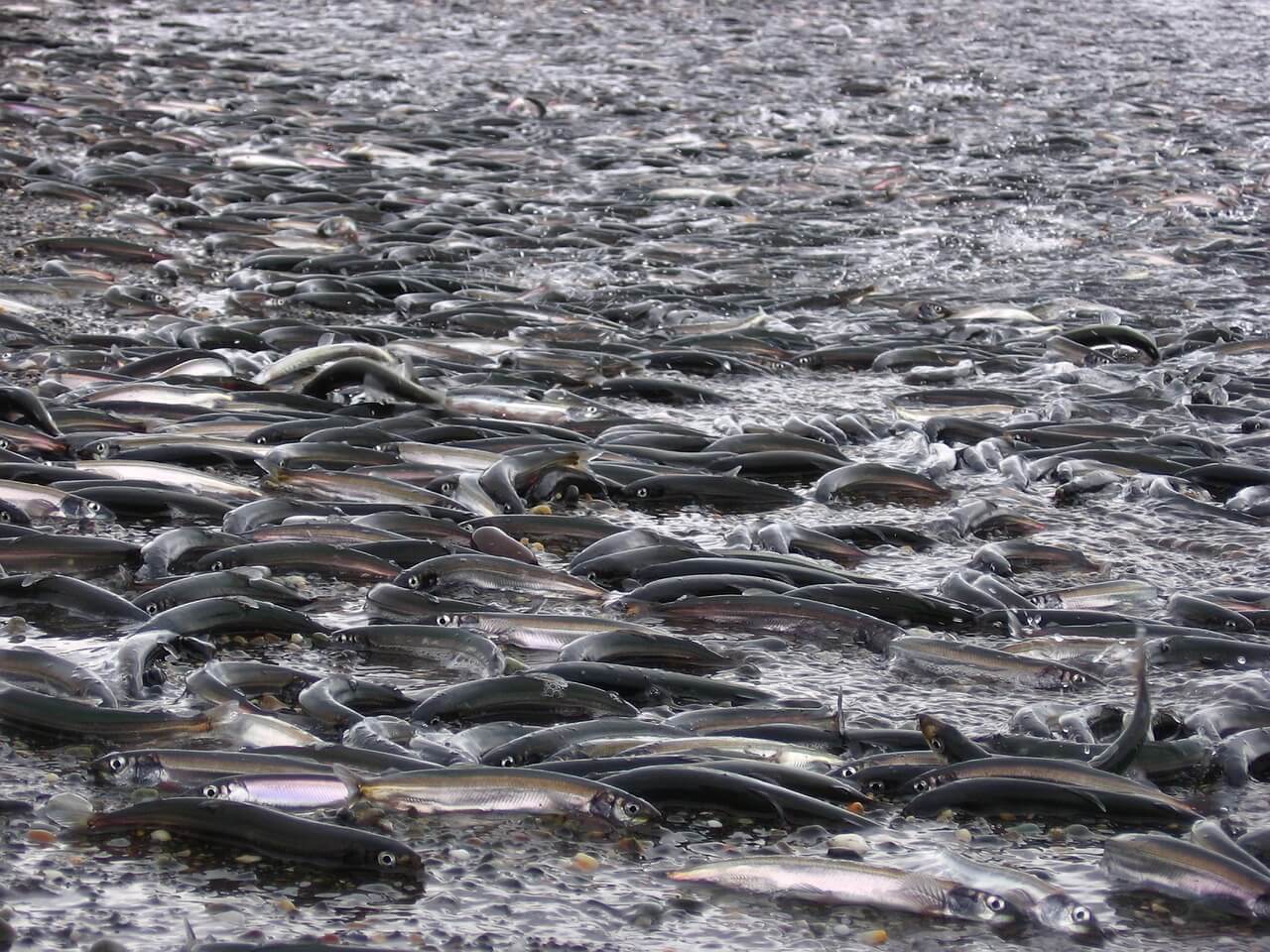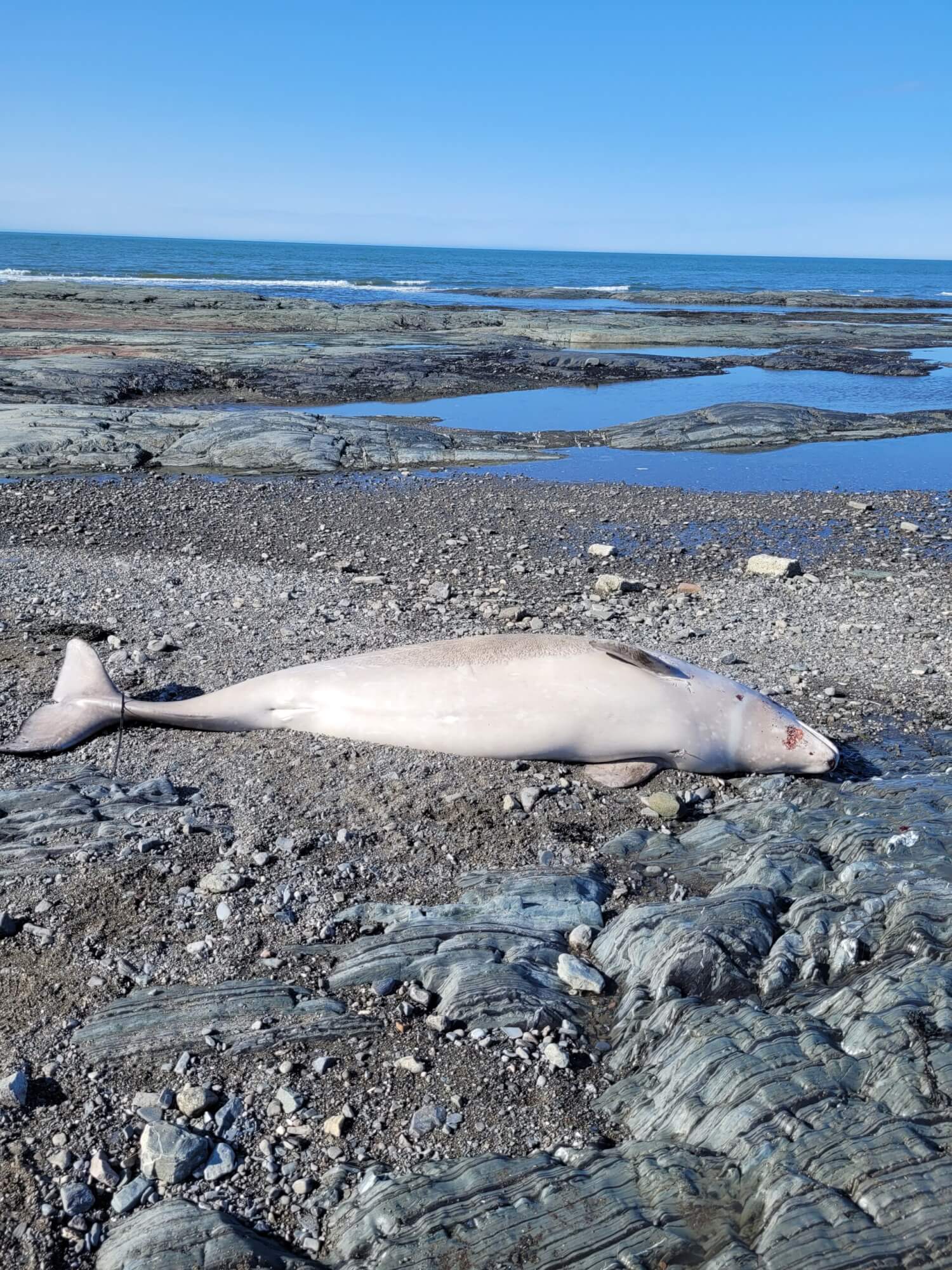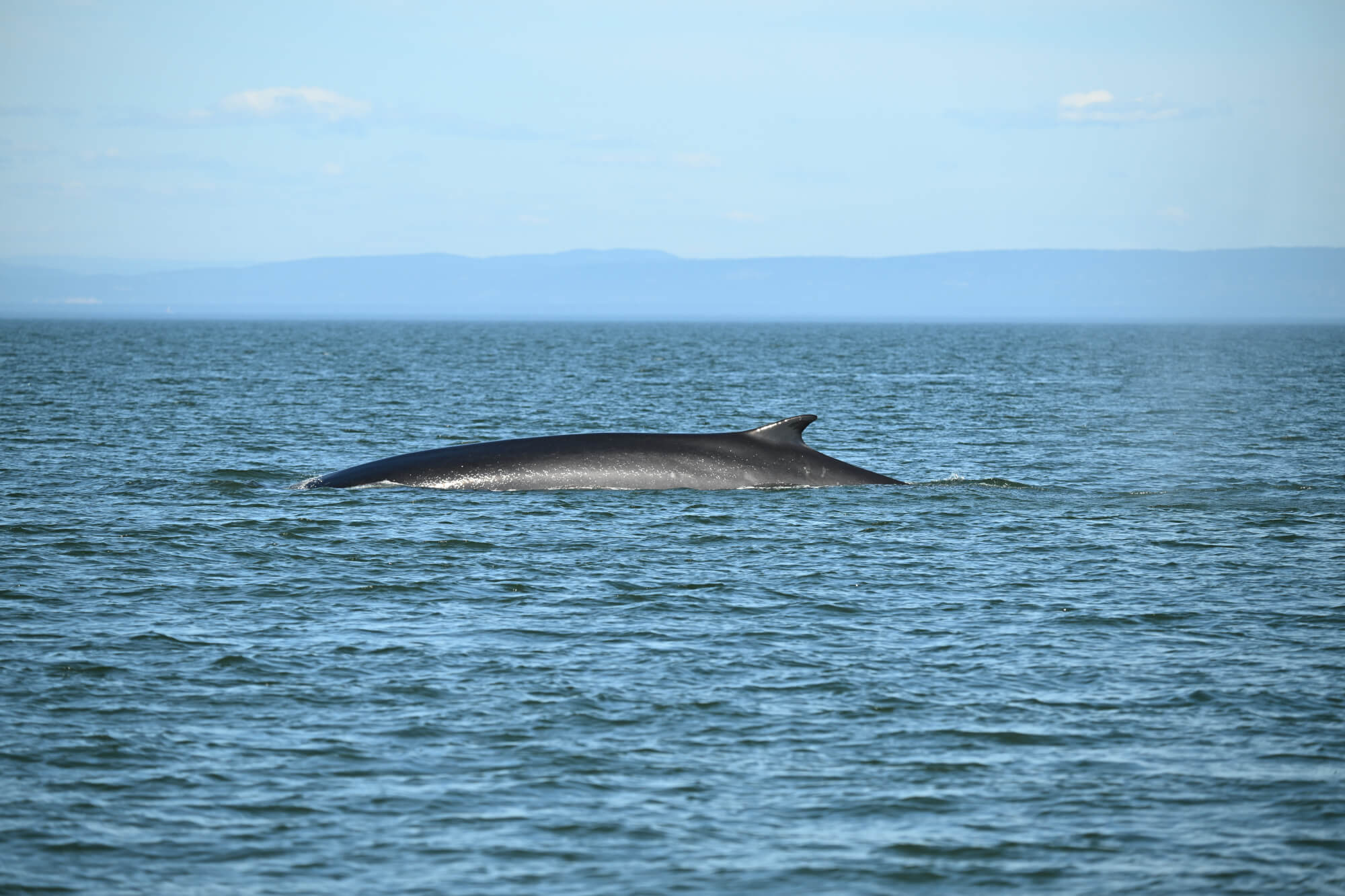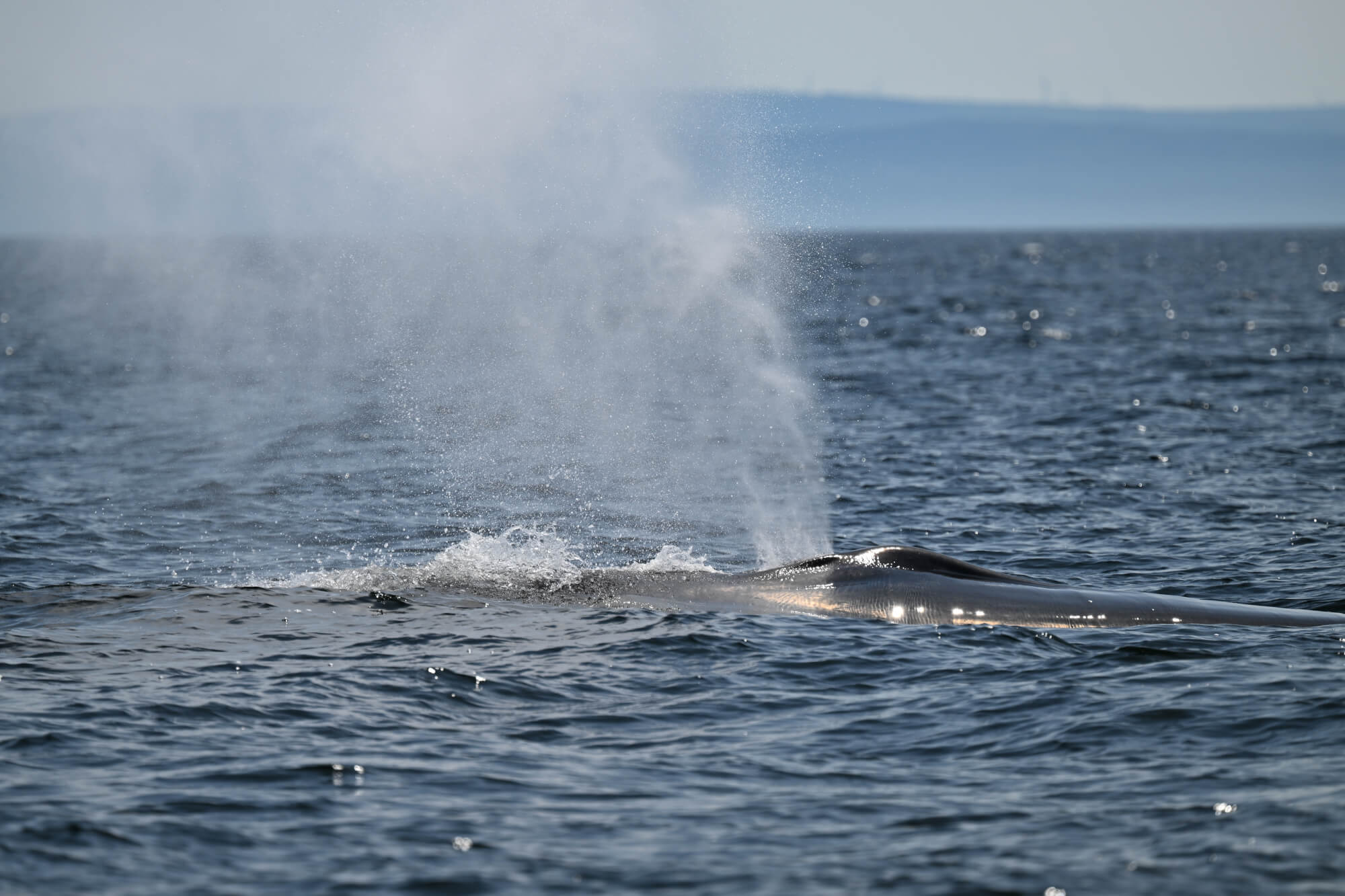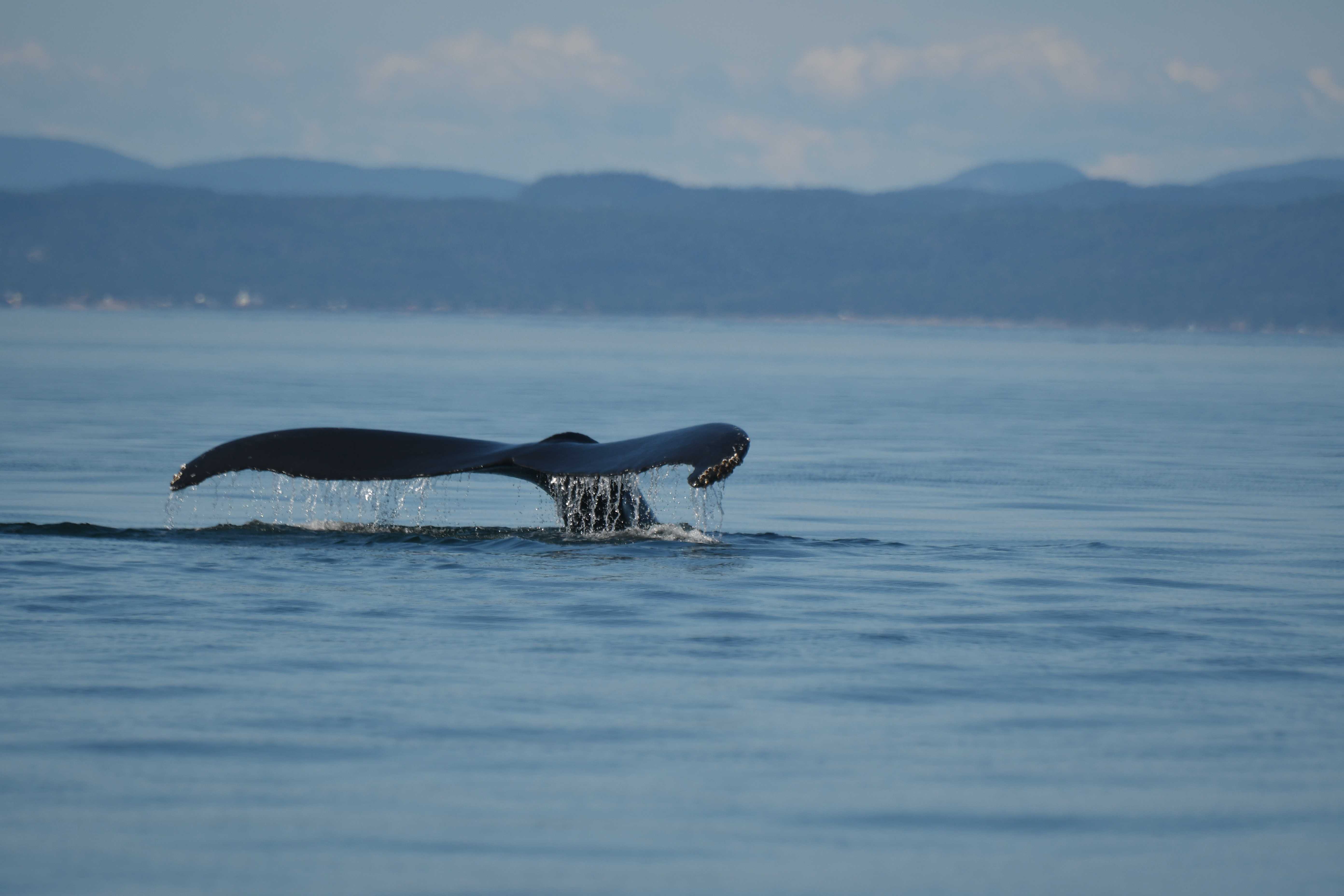“Small fish such as capelin (Mallotus villosus) and sand launce [sic] (Ammodytes spp.) […] are the main food of Beluga of all ages,” wrote biologist Vadim Vladykov in 1944 regarding the diet of the St. Lawrence beluga. In 2025, a scientific publication from Fisheries and Oceans Canada (DFO) stated that the proportion of capelin and sand lance in the belugas’ diet had declined significantly, and that a wide diversity of diets was now being observed within the population.
What has happened in recent decades? DFO scientists are still unsure of the exact cause, but suggest that several factors – including climate change and overfishing – might be to blame for these variations, according to an article published last February in Scientific Reports, published by the journal Nature.
Tell me what you eat, and I’ll tell you how your environment is faring
Jory Cabrol, a researcher at the Maurice Lamontagne Institute (MLI) specializing in feeding behaviour ecology and lead author of the study, explains that pelagic fish (article in French) – including capelin – were still amongst the most frequently consumed prey by individual belugas between 2015 and 2020. However, their proportion in the diet is lower compared to data collected between 1997 and 2003.
Dr. Cabrol mentions that striped bass, rainbow smelt and Atlantic tomcod (webpages in French) have become more important in the beluga’s diet at the expense of capelin and herring, two lipid-rich pelagic species that are currently in decline. In the early 2000s, significant differences were observed between the diets of males and those of female-calf herds due to spatial segregation during the summer months. These dietary differences were less pronounced during the second study period (2015-2020).
Belugas “eat different proportions [of prey], but are similar in terms of specialization, regardless of sex. There is less diversity between individuals, as all individuals are tending to become a little more generalist,” summarizes Jory Cabrol. In 2021, a DFO study reached a similar conclusion for fin whales in the St. Lawrence Estuary: a marked trend toward a more generalist diet, believed to be due to changes in the ecosystem.
It’s all in the muscle
To arrive at these results, muscle tissue was sampled from 96 beluga carcasses. Recovered from the shores of the St. Lawrence between 1997 and 2020, only individuals over two years old were used to avoid dietary biases related to nursing. With these samples, DFO scientists performed what is called stable isotope ratio analysis. These isotopes are different forms of the same carbon, oxygen, sulphur or even nitrogen atom. Stable isotope analysis was carried out to determine whether belugas had a more general or specialized diet.
Samples of prey from the stomachs and digestive systems of the beluga carcasses were also taken. Prey abundance surveys and observations of feeding behaviours also provided insight into the diets of these marine mammals.
Epicurean... or desperate?
A few weeks ago, the presence of a beluga carcass on the shores of the Lower St. Lawrence was reported to the Marine Mammal Emergencies hotline. At first glance, this wasn’t unusual, as spring is often the time of year when the first beluga carcasses are reported. It was the necropsy performed on the animal that surprised scientists: The beluga died after choking on a 93 cm long black dogfish!
The black dogfish is a small species of shark that reaches just under a metre long in the largest adults. Did this female beluga make a mistake? Or was she so hungry that she had no choice but to attack this large fish? The remains to be solved.
What are the chances of the St. Lawrence beluga making a comeback?
In 1944, biologist Vadim Vladykov noted that pelagic fish were an integral part of the St. Lawrence beluga’s diet. Today, DFO scientists agree that the species that once filled the belugas’ stomachs are no longer the same. The conclusions drawn from this new study raise several questions, particularly regarding the beluga’s chances of recovery. Will it be able to adapt to changes in its environment? Will it be able to find enough lipid-rich food to ensure its survival?
In September 2024, the DFO published a report entitled Recovery Potential Assessment for the St. Lawrence Estuary Beluga (Delphinapterus leucas) Population. The report stated that the risk of near-extinction of the St. Lawrence beluga in conditions where water temperatures rise by another 0.5°C over the next 100 years would be extremely low (0.3%). On the other hand, there is a 61% chance that the population would fall to a critical level, i.e. fewer than 1,600 individuals.
Formerly numbering over 10,000 individuals, the St. Lawrence beluga population is now estimated at between 1,500 and 2,200. Extermination, sport hunting, contamination, and human disturbance caused by shipping traffic – the list of factors for the population’s decline is long. Could the recent announcement of the expansion of the Saguenay–St. Lawrence Marine Park (almost quadrupling in size) to cover 100% of critical beluga habitat represent a reversal of fortunes for this species? “Recovery is theoretically possible, even more so if we can mitigate some of the current threats to the population,” reads the 2024 report.
As the species preyed upon by the St. Lawrence beluga are more numerous and diverse than they were before, however, protection is becoming complex, adds feeding behaviour ecology specialist Jory Cabrol. “It is essential to have continuous data over very extended periods to fully understand and quantify the influence of ecosystem changes on beluga populations and their prey, as well as on potential competitors like seals. Answering these questions takes decades,” he concludes.


